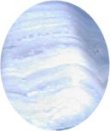
Blue Lace Agate
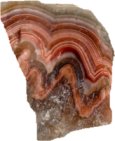
Banded Agate
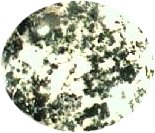
Tree Agate
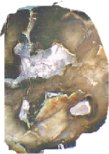
Petrified wood
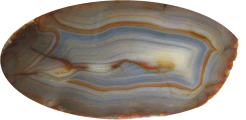
Agate is not a distinct mineral species, but an aggregate of various forms of silica; (SiO2), mainly Chalcedony. Agate hardness is about 6.5 and has a specific gravity of about 2.6. According to Theophrastus, a Greek philosopher of the time of Aristotle, agate (achates) gets its name from the river where the stone was first found, the river Achates in Sicily, (now called the Drillo). Agates are formed by chemical precipitation from a silica-rich solution in rock cavities and are often characterized by bands of different colours.
The colour of agates can vary significantly, depending on the distribution of minerals within each band. Minerals that contribute to the stone colour include: iron oxides (red, brown, black, green), manganese (pink, violet, black), chromium (green, yellow, red), titanium (blue), cobalt (red), nickel (green), and copper (red, blue, and green). The shade of colour is further modified when these minerals work in combination. The colour can occur through an agate band, or it can form as small, dot-like inclusions. Colour can also be influenced by temperature, radiation, pressure, and weathering.
Most agates occur as nodules in eruptive rocks or ancient lavas where they represent cavities originally produced by vapour blowing out from the molten mass. These cavities were then filled, wholly or partially, by siliceous matter deposited in regular layers upon the walls. The first layer spread over the wall of the cavity has been called the "priming," and upon this base zeolitic minerals may be deposited. The first deposit on the wall of a cavity, forming the "skin" of the agate, is generally a dark greenish mineral substance, such as celadonite, delessite or "green earth." These are rich in iron which is probably derived from the decomposition of the agate in the mother-rock. This green silicate may slowly change to a brown oxide of iron (limonite), producing a rusty appearance on the outside of the agate nodule. Freed from its matrix, the outer surface of an agate is often pitted and rough, probably as a result of the removal of the original coating.
Agates are widely distributed, although the main deposits are in India, Brazil, Madagascar, China, Russia and Australia. The most common types of agates are shown below, but there are some unique agates which definitley deserve mention. These include: Kentucky Agate, an agate with bright red bands which is found only in Kentucky and is prized by collectors; Cyclops Agate, a Mexican agate, which shows only a single eye; and Turritella agate, formed from fossil Turritella shells silicified in a chalcedony base.
Types of Agates
 Blue Lace Agate |  Banded Agate |  Tree Agate |  Petrified wood |
 Carnelian Agate |  Moss Agate |  Fire Agate |
| _______________________________ | ||||
| Home | | | Shopping | | | Database |
© Biscuit Software 2004-2015
All rights reserved